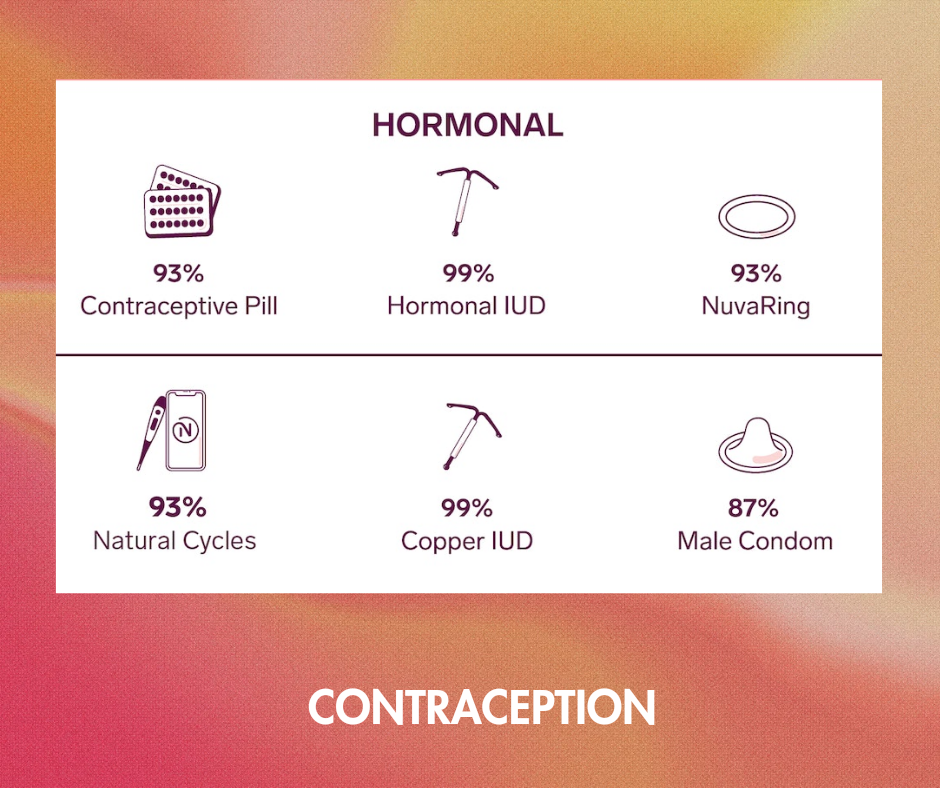
The realm of birth control options has expanded significantly over the years, offering individuals greater agency in their reproductive decisions. While hormonal contraceptives have been the most widely used method, they may not be suitable for everyone due to potential side effects or health concerns. Fortunately, non-hormonal birth control options have emerged as effective alternatives, providing a diverse range of choices that offer both efficacy and safety. In this article, we will explore the various non-hormonal birth control methods available today.
Barrier Methods
Barrier methods are among the oldest and most accessible non-hormonal birth control options. They work by creating a physical barrier between sperm and the cervix, preventing fertilization. Some common barrier methods include:
a) Condoms: Male condoms are worn over the penis, while female condoms are inserted into the vagina before sexual intercourse. They also serve as an added protection against sexually transmitted infections (STIs).
b) Diaphragms and Cervical Caps: These are flexible, shallow cups inserted into the vagina to cover the cervix, acting as a barrier against sperm.
Intrauterine Devices (IUDs)
Intrauterine devices are small, T-shaped devices inserted into the uterus by a healthcare provider. They come in hormonal and non-hormonal variations. Non-hormonal IUDs, often made of copper, work by creating an inhospitable environment for sperm, preventing fertilization. They can provide long-term contraception, lasting up to 10 years, and are highly effective.
Copper IUDs: The Non-Hormonal Warrior
Copper IUDs have gained popularity as one of the most effective and reliable non-hormonal birth control options available. Copper is toxic to sperm, impairing their mobility and survival. Additionally, the presence of copper triggers an inflammatory response in the uterus, which further prevents fertilization by interfering with the sperm’s journey towards the egg. Unlike hormonal birth control methods, copper IUDs do not interfere with the natural hormone levels in the body, making them a suitable choice for those sensitive to hormones.
Fertility Awareness-Based Methods (FABMs)
Fertility awareness-based methods involve tracking and understanding a person’s menstrual cycle to identify fertile and non-fertile days. This information can help individuals avoid unprotected intercourse during their fertile window, reducing the chances of pregnancy. FABMs require diligence and consistency in tracking various fertility indicators, such as basal body temperature and cervical mucus changes.
Withdrawal Method
While the withdrawal method, or “pulling out,” is one of the oldest contraceptive practices, it is among the least reliable. It involves the male partner withdrawing the penis from the vagina before ejaculation, with the goal of preventing sperm from entering the reproductive tract. However, this method is prone to human error and provides limited protection against pregnancy and STIs.
Sterilization
For those seeking a permanent non-hormonal birth control solution, sterilization offers a viable option. Both tubal ligation (for women) and vasectomy (for men) involve surgical procedures to block or cut the fallopian tubes or vas deferens, respectively. While these methods are effective, they are considered irreversible and should be approached with careful consideration.
In the pursuit of reproductive autonomy, non-hormonal birth control options have emerged as valuable alternatives for individuals seeking effective contraception without the use of hormones. From barrier methods to copper IUDs, fertility awareness-based methods to sterilization, the array of choices empowers people to make informed decisions about their bodies and sexual health. However, it is essential to consult with a healthcare professional to determine the most suitable option based on individual health needs and lifestyle. Ultimately, the availability of non-hormonal birth control methods underscores the importance of comprehensive and diverse contraceptive choices in promoting reproductive freedom and responsible family planning.
